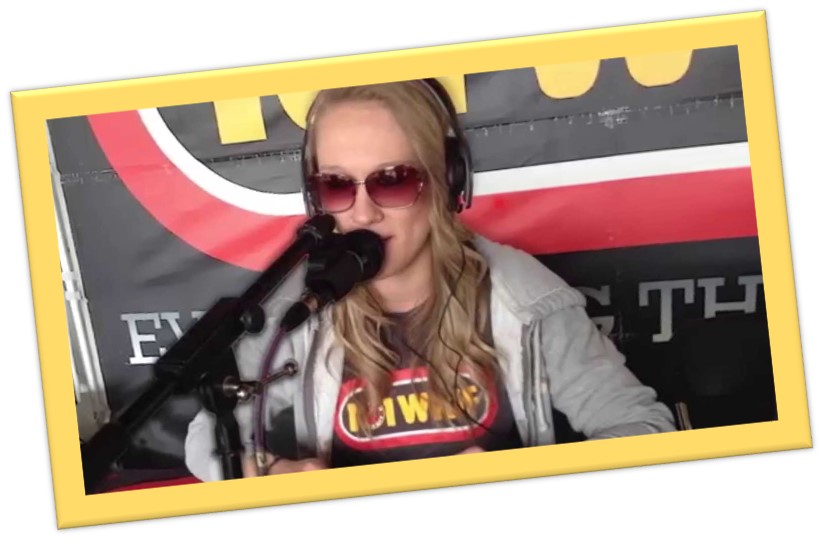
Radio research has evolved considerably over the past many decades, and so have the ways in which programming teams choose the music they play. Beasley-owned WRIF Radio in Detroit is a case in point. It’s my alma mater – I programmed the station back in the days when ABC owned the station and D.R.E.A.D. cards (anti-disco, of course) were flying out the door.
Back then, there was a lot more music to choose from, and new albums from our super group stable of artists were being released every week. In those days, we were conducting music research, but we were also calling area record stores every Monday to track their sales.
Today, a lot has changed, but WRIF is stronger than ever. It’s the market leader in the prime 25-54 demo, and it’s the only FM station in Detroit that’s still in the same format when it was born back on Valentine’s Day in 1971. Today, led by programmer Mark Pennington, WRIF has a great team in place, on the air and off.
Music Director Jade Springart is a great story, having moved up the ranks as a WRIF intern nearly a decade ago. Like many at the station, she’s a Detroit area native, and knew she wanted to pursue a career in media. Through the years, she’s gained experience in production, promotions, programming, and podcasting. Jade co-hosts the “Mark and Andy Show” on Saturday mornings, and does her share of fill-in shifts on the air. She also programs WRIF’s famous HD2 side channel Riff2, hosts their new music show “The Undercover Sound System,” and co-hosts a weekly podcast called “The Weekly Reveal.”
In today’s “Guest List,” Jade takes us behind the scenes at WRIF’s music meetings, and talks about how Rock stations go through the process of evaluating and choosing the music they play. No, they’re not calling record stores. – FJ

Music is subjective. Music is emotional. Music can connect people on a completely new level. That can put a lot of pressure on a radio station to make the right decision when deciding what music to play. Here are 5 factors every Music Director should bring to their station’s music meeting:
1. The Industry
Our business is communication, and we have a ton of great resources like Jacobs Media, the charts, and promoters to inform us about what’s gaining  buzz. It’s helpful to engage in conversations with people outside of the radio station to get their insight and opinions. The Mediabase & BDS charts are a great indicator of what’s doing well throughout the radio industry. It can also be beneficial to look at the Billboard charts and see what the consumer is willing to pay money for. But the numbers aren’t always what they appear to be.
buzz. It’s helpful to engage in conversations with people outside of the radio station to get their insight and opinions. The Mediabase & BDS charts are a great indicator of what’s doing well throughout the radio industry. It can also be beneficial to look at the Billboard charts and see what the consumer is willing to pay money for. But the numbers aren’t always what they appear to be.
Chart position shouldn’t be the deciding factor in adding a song. Does the song fit in your playlist? Remember, the charts focus heavily on spin count but that doesn’t mean the song is a hit. Some songs make it into the top 30 and never get played in a major market. If you’re questioning whether or not to add a song, research if it’s getting played in the biggest markets. It may just be in power rotation in a smaller market and while that’s tells you something, it doesn’t mean that song will work for you.
If your heritage rock station has never played the Kings of Leon, adding it just because it’s top 5 on the charts might not be wise. Really look at what the data is telling you. “Insert Band Name Here” just sold out a venue in a major market! But wait, that venue is the smallest in town. That data is good to know, but it’s not exactly helpful and the same goes with a band selling out their hometown. While that’s awesome and I’d never want to take away from their personal success, it doesn’t factor into your station’s goals.
2. Online Buzz
In today’s world of social media, it’s not hard to find out how people feel about any and everything, including music. When the latest single from a band gets released and accumulates millions of hits on YouTube, thousands of downloads, pre-orders on iTunes, and has been Shazamed all across the country, it’s a good gauge of what your station’s listeners might feel about it.
At the same time, there are more factors to the online buzz than the numbers. Just because a video has a million hits on YouTube doesn’t mean it’s a  good song. It could mean the video features a cameo from Will Ferrell that everyone wanted to see. Does that warrant getting an immediate add? The same goes for Shazam which is tracked by location. If you’re in a smaller market and the song is getting Shazamed in the big cities, you might want to take a second look at it. Is the song showing actin mostly in the band’s home town? There’s more to it than stats, but you have to be willing to dig for the good info.
good song. It could mean the video features a cameo from Will Ferrell that everyone wanted to see. Does that warrant getting an immediate add? The same goes for Shazam which is tracked by location. If you’re in a smaller market and the song is getting Shazamed in the big cities, you might want to take a second look at it. Is the song showing actin mostly in the band’s home town? There’s more to it than stats, but you have to be willing to dig for the good info.
3. Other Stations in the Format
Music can be very regional and what works at stations on the East or West Coasts doesn’t necessarily mean it will work in the Midwest. With that being said, it doesn’t mean you shouldn’t check out what other stations are playing. The overall lifestyle mentality differs from coast to coast, and region to

region. The surfer dude in California might be a little more laid back than the car guy in Michigan.
The Grunge scene was and is enormous near Seattle and while we love it in the Midwest, we also love our Kid Rock. That’s not to say stations all over aren’t playing all these bands & musicians, but that’s where rotation factor comes into play. Stations on the west coast might have Sublime in heavier rotation while stations in the mid-west rock the K-I-D a little more frequently.
Listening to Active Rock and Alt stations outside your region can expose you to music you may not have heard otherwise. Will it be a smash in your city? Maybe not, but at least you had the option and were aware it existed. If a station is listed and you can view their playlist, whether they are in the top 10 markets or just a college town, check it out.
I’m always stalking what our Beasley counterparts are playing, but I’m also looking at other stations in other markets. Personally, I like to look at what’s going on in Denver and Seattle because it spans the country and they both have prominent Active Rock and Alternative stations in those markets.
4. Listener Feedback
Did you receive 42 tweets about a song sucking? Did they come from different people? Listeners can become trolls really fast on the Internet, but maybe they aren’t wrong. If multiple people are telling you they don’t like what you’re playing, it might be time to revisit that song and see if it’s really benefitting your playlist. Odds are, you know something they don’t as an industry  professional, but our job is to provide the best product possible and it never hurts to check out some consumer feedback.
professional, but our job is to provide the best product possible and it never hurts to check out some consumer feedback.
5. Personal Opinion
As the music director of a station, someone somewhere respects your opinion on the music in your format. Don’t sell that short! You obviously have an ear for music and this is your opportunity to make or break a band. The data and stats are a great place to start, but don’t base your decision solely on that. If you feel passionately about a song or artist, talk about it. Share it with everyone you work with. There’s no greater feeling than taking a chance on a song and watching it climb to #1!
Thanks to Seth Resler for putting this week’s “Guest List” together.
More Guest Lists
- James Cridland: 5 Countries You Should Look At For Radio Ideas
- Jamie Michelson: 5 Reasons Why I’m Still Loyal To Radio
- Jim Cutler: 5 Tips To Help Radio Turn Empty Imaging into Solid Content
- Dick Kernen: 5 New Skills That Broadcasting Schools Are Now Teaching
- Mark Biviano: 5 Ways Radio Can Win With Event Marketing
- A Simple Digital Treat to Thank Your Radio Listeners This Thanksgiving - November 13, 2023
- Interview Questions When Hiring Your Radio Station’s Next Digital Marketing Manager - November 6, 2023
- A Radio Conversation with ChatGPT: Part 2 – Promotions - October 30, 2023





Great read Seth …. good insight in this day and age of corporate playlists … so great to get a feel of a town from listening to its authentic rock station man